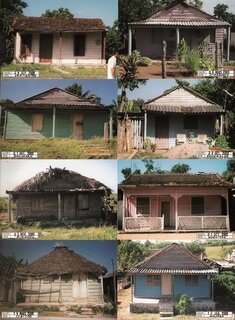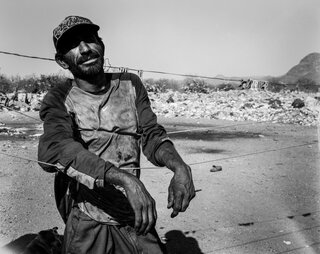
Robert Gumbiner Foundation Collection.
Verónica Riedel received her B.A. in Communications and a specialization in cinema at Miami University and UCLA, respectively. She is a director, producer, screenwriter, and multimedia artist. Her narrative feature film and opera prima Capsules (2012) participated in more than 30 international film festivals. This work from the series The Making of the Mestizas places indigenous women in a position of prestige, challenging the way these women were treated in Latin America during and after the Spanish conquest. A Mestiza is a woman of mixed indigenous and European descent and is one of many racial categories that were established in Latin America to create social, economic, and political hierarchies. These categories privileged people of European lineage and gave fewer rights to indigenous, African, and mixed-race people.
Verónica Riedel places indigenous women in a position of prestige in this photo collage, challenging the racial categories established in the Americas in order to create social, economic, and political hierarchies. These racial classifications denied basic rights to indigenous, African and mixed race people throughout the colonial project and continue to privilege people of European lineage today. Riedel uses portraiture, a genre of painting and photography once regarded only for the elite, to present indigenous and mixed race women as “queens”, celebrating their struggles and strengths, and challenging the trope of victimization prevalent in historical narrations of BIPOC women in the Americas.
Verónica Riedel recibió su B.A. en Comunicaciones y una especialización en cine en Miami University y UCLA, respectivamente. Es directora, productora, guionista y artista multimedia. Su largometraje narrativo y ópera prima Capsules (2012) participó en más de 30 festivales internacionales de cine. Esta obra de la serie The Making of the Mestizas coloca a las mujeres indígenas en una posición de prestigio, desafiando la forma en que estas mujeres fueron tratadas en América Latina durante y después de la conquista española. Una mestiza es una mujer de ascendencia mixta indígena y europea y es una de las muchas categorías raciales que se establecieron en América Latina para crear jerarquías sociales, económicas y políticas. Estas categorías privilegiaban a las personas de linaje europeo y otorgaban menos derechos a las personas indígenas, africanas y mestizas.
Verónica Riedel coloca a las mujeres indígenas en una posición de prestigio en este collage de fotos, desafiando las categorías raciales establecidas en las Américas para crear jerarquías sociales, económicas y políticas. Estas clasificaciones raciales negaron los derechos básicos a los pueblos indígenas, africanos y mestizos a lo largo del proyecto colonial y continúan privilegiando a las personas de linaje europeo en la actualidad. Riedel utiliza el retrato, un género de pintura y fotografía que alguna vez fue considerado solo por la élite, para presentar a las mujeres indígenas y mestizas como "reinas", celebrando sus luchas y fortalezas y desafiando el tropo de victimización prevaleciente en las narraciones históricas de las mujeres BIPOC Américas.




